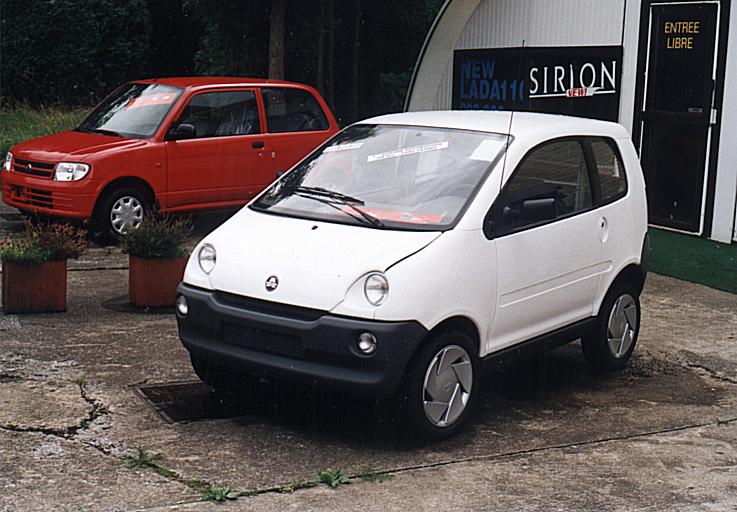At the dawn of the new millennium, a quiet revolution in urban mobility took shape in the narrow streets of European cities. The Aixam 400 Eco emerged as a pioneering solution for those seeking independence without the complexity of traditional vehicle ownership. This compact marvel redefined what it meant to navigate city spaces, offering freedom of movement to both young aspirants and experienced seniors alike.
The concept of “voiture sans permis” — vehicles driveable without a full license — might seem unusual to many. Yet, this unique approach to personal transportation opened new possibilities for urban mobility, with the Aixam 400 Eco standing at the forefront of this innovative movement.
The Micro Revolution: Understanding Aixam 400 Eco
The story of the Aixam 400 Eco begins with its remarkably compact footprint. At just 2600mm in length and 1400mm in width, this microcar proved that effective urban transportation doesn’t require excessive space. The three-door configuration offered a perfect balance between accessibility and structural integrity, while the automatic transmission made operation intuitive for drivers of all experience levels.
The vehicle’s design philosophy centered on maximizing utility within minimal dimensions. Every centimeter served a purpose, from the carefully calculated body panels to the thoughtfully positioned controls.
“The Aixam 400 Eco represented a paradigm shift in urban mobility design,” notes Dr. Jean-Pierre Dubois, automotive historian at the European Transport Institute. “Its success proved that efficient city transportation could be both accessible and practical.”
Fact!
The Aixam 400 Eco was among the first in its class to feature an automatic transmission as standard, making it exceptionally user-friendly for novice drivers.
The microcar’s impact extended beyond its physical dimensions. It created a new category of urban vehicle that prioritized accessibility without compromising on essential functionality.
Technical Mastery in Miniature
At the heart of the Aixam 400 Eco lies its remarkably efficient 399cc diesel engine. This compact powerplant, designated as the Z402, delivers 4 kW (5 hp) at 3200 rpm — a output perfectly matched to urban environments. The two-cylinder configuration balances power delivery with fuel efficiency, while the natural aspiration system ensures reliable operation with minimal maintenance requirements.
The engineering team faced unique challenges in designing a power unit that could meet strict regulatory requirements while delivering adequate performance. Their solution was elegantly simple: focus on optimization rather than raw power.
Key technical innovations include:
- refined fuel injection system for optimal efficiency;
- balanced two-cylinder design for smooth operation;
- simplified maintenance requirements for long-term reliability;
- optimized power delivery for urban use cases;
- integrated cooling system for consistent performance.
This technical approach proved highly successful, with many units still running reliably decades after manufacture.
Important!
The 16-liter fuel tank, combined with the efficient diesel engine, provided exceptional range for urban use, often requiring refueling only once every few weeks under normal city driving conditions.
Urban Practicality Meets Design
In the urban environment, the Aixam 400 Eco truly shines. Its compact dimensions make it exceptionally maneuverable in tight city spaces, while the three-door hatchback design provides surprisingly practical access to both passenger and cargo areas.
The vehicle’s design prioritizes visibility and ease of use, with large windows and minimal blind spots. This attention to practical details made it particularly popular among both new drivers and those returning to driving after a long break.
“I’ve been using my Aixam 400 Eco for daily commutes for over a decade,” shares Marie Laurent, a long-term owner from Lyon. “Its reliability and ease of parking have made it irreplaceable for city living.”
The interior layout maximizes available space through clever design solutions, proving that compact dimensions don’t necessarily mean cramped accommodation.
Long-term Impact and Legacy
Between its introduction in December 2000 and the end of production in May 2012, the Aixam 400 Eco established itself as a benchmark in the microcar segment. Its influence extended beyond sales figures, helping to legitimize the concept of license-free vehicles for urban use.
The model’s enduring popularity on the used market speaks to its fundamental soundness of design. Even today, well-maintained examples continue to serve their owners faithfully, testament to the durability of their engineering.
Historical Reference!
The Aixam 400 Eco's production span coincided with increasing urban density in European cities, making it particularly relevant as a solution to growing mobility challenges.
The legacy of this unique vehicle continues to influence modern approaches to urban mobility, particularly in discussions about sustainable and accessible transportation solutions.
Pioneering Urban Mobility Solutions
The Aixam 400 Eco represented more than just a novel approach to personal transportation. It demonstrated how thoughtful engineering and design could create vehicles that serve specific community needs while maintaining practicality and reliability.
Looking forward, the principles embodied in this pioneering microcar — accessibility, efficiency, and urban practicality — remain as relevant as ever, perhaps even more so in our increasingly urbanized world.
Pros & Cons
| Advantages | Disadvantages |
|---|---|
| Accessible to drivers without full license: Makes personal mobility available to more users | Limited power output: 4 kW may feel insufficient on longer journeys |
| Compact dimensions: Extremely easy to park and maneuver in tight urban spaces | Restricted speed capability: Not suitable for highway use |
| Efficient diesel engine: Excellent fuel economy for regular city use | Basic interior amenities: Limited comfort features compared to standard cars |
| Automatic transmission: Simple and intuitive operation | Small fuel tank: 16L capacity requires more frequent refilling |
| Durable construction: Many units still operational after decades | Limited passenger capacity: Compact size restricts occupant space |
| Low maintenance requirements: Simple mechanical design reduces service needs | Weather sensitivity: Light weight affects stability in strong winds |
| Strong secondhand value: Maintains worth due to specific market niche | Limited cargo space: Restricted storage capacity for larger items |
The Aixam 400 Eco (2000) stands as a testament to focused engineering meeting specific user needs. While its limitations are clear, they’re largely by design rather than oversight, creating a vehicle that excels within its intended use case. For urban dwellers seeking simple, efficient transportation, its advantages often outweigh its constraints, explaining its enduring appeal in the microcar segment.

